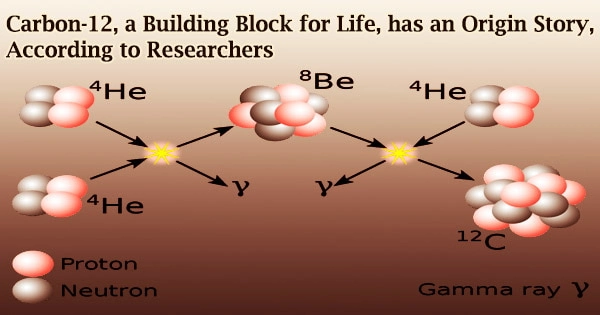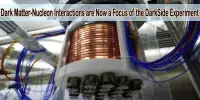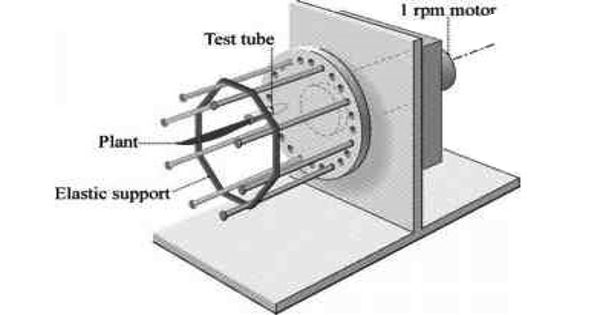Gravitational waves are ripples in the fabric of spacetime, caused by the acceleration of massive objects. They were first predicted by Albert Einstein’s theory of general relativity in 1916, and were detected for the first time in 2015 by the Laser Interferometer Gravitational-Wave Observatory (LIGO).
According to a new study in Physical Review Letters, a team of theoretical scientists has discovered it would be able to detect Q-balls in gravitational waves, and their finding would explain why more matter than anti-matter was left over after the Big Bang.
Because more matter than anti-matter was created at some point during the first second of the universe’s existence, we are here today. Only one more particle of matter was created for every ten billion anti matter particles due to the asymmetry’s minute size.
The issue is that, despite the fact that this asymmetry is slight, existing physics theories are unable to account for it. The presence of humanity, Earth, and everything else in the universe is evidence that there must be additional, as yet undiscovered physics, despite the fact that traditional theories predict that matter and anti matter should have been formed in exactly equal amounts.
Presently, a widely accepted theory among scientists holds that this asymmetry was created shortly after inflation, a time in the early cosmos when the universe expanded very quickly. It’s possible that a field blob that extended over the horizon evolved and broke apart in just the proper way to create this imbalance.
We argue that very often these blobs of field known as Q-balls stick around for some time. These Q-balls dilute slower than the background soup of radiation as the Universe expands until, eventually, most of the energy in the Universe is in these blobs. In the meantime, slight fluctuations in the density of the soup of radiation start to grow when these blobs dominate. When the Q-balls decay, their decay is so sudden and rapid that the fluctuations in the plasma become violent soundwaves which leads to spectacular ripples in space and time, known as gravitational waves, that could be detected over the next few decades. The beauty of looking for gravitational waves is that the Universe is completely transparent to gravitational waves all the way back to the beginning.
Graham White
The energy required to test this paradigm directly, however, is billions to trillions of times more than anything that can be produced by humans on Earth, making it challenging to do so even with the world’s largest particle accelerators.
Now, a team of researchers in Japan and the US, including Kavli Institute for the Physics and Mathematics of the Universe Project Researcher Graham White, and Visiting Senior Scientist Alexander Kusenko, who is also a Professor of Physics and Astronomy at UCLA, have found a new way to test this proposal by using blobs of field known as Q-balls.
Gravitational waves are generated by the acceleration of massive objects such as black holes, neutron stars, and supernovae. When these objects move or collide with each other, they emit gravitational waves that propagate through the universe at the speed of light.
The nature of Q-balls is a bit tricky to understand, but they are bosons like the Higgs boson, explains Graham White, lead author and Project Researcher at Kavli IPMU.
“A Higgs particle exists when the Higgs field is excited. But the Higgs field can do other things, like form a lump. If you have a field that is very like the Higgs field but it has some sort of charge not an electric charge, but some sort of charge then one lump has the charge as one particle. Since charge can’t just disappear, the field has to decide whether to be in particles or lumps. If it is lower energy to be in lumps than particles, then the field will do that. A bunch of lumps coagulating together will make a Q-ball.”
“We argue that very often these blobs of field known as Q-balls stick around for some time. These Q-balls dilute slower than the background soup of radiation as the Universe expands until, eventually, most of the energy in the Universe is in these blobs. In the meantime, slight fluctuations in the density of the soup of radiation start to grow when these blobs dominate. When the Q-balls decay, their decay is so sudden and rapid that the fluctuations in the plasma become violent soundwaves which leads to spectacular ripples in space and time, known as gravitational waves, that could be detected over the next few decades. The beauty of looking for gravitational waves is that the Universe is completely transparent to gravitational waves all the way back to the beginning,” said White.
The researchers also discovered that the conditions that lead to the formation of these ripples are fairly typical, and the gravitational waves that follow from them should be large enough and of low enough frequency to be picked up by standard gravitational wave detectors.
“If this is how the asymmetry was made, it is almost certain that we will soon detect a signal from the beginning of time confirming this theory on why we, and the rest of the world of matter, exist at all,” said White.
















